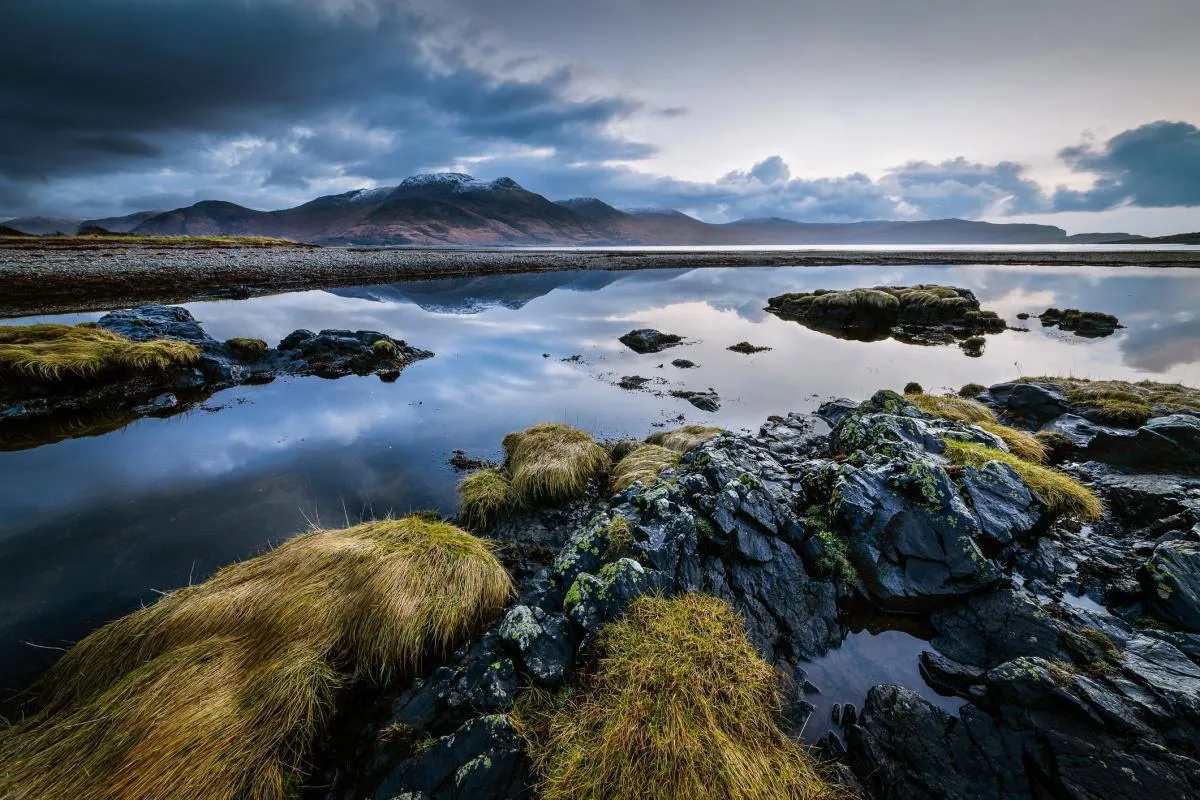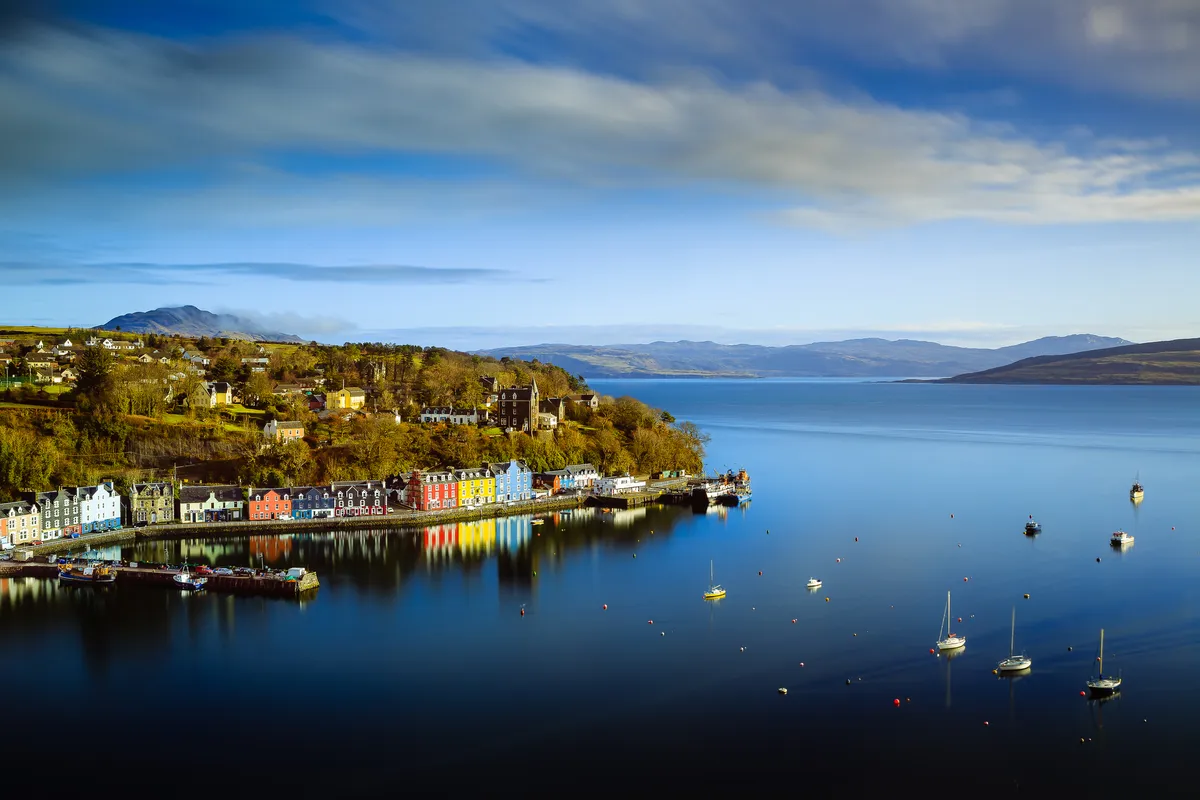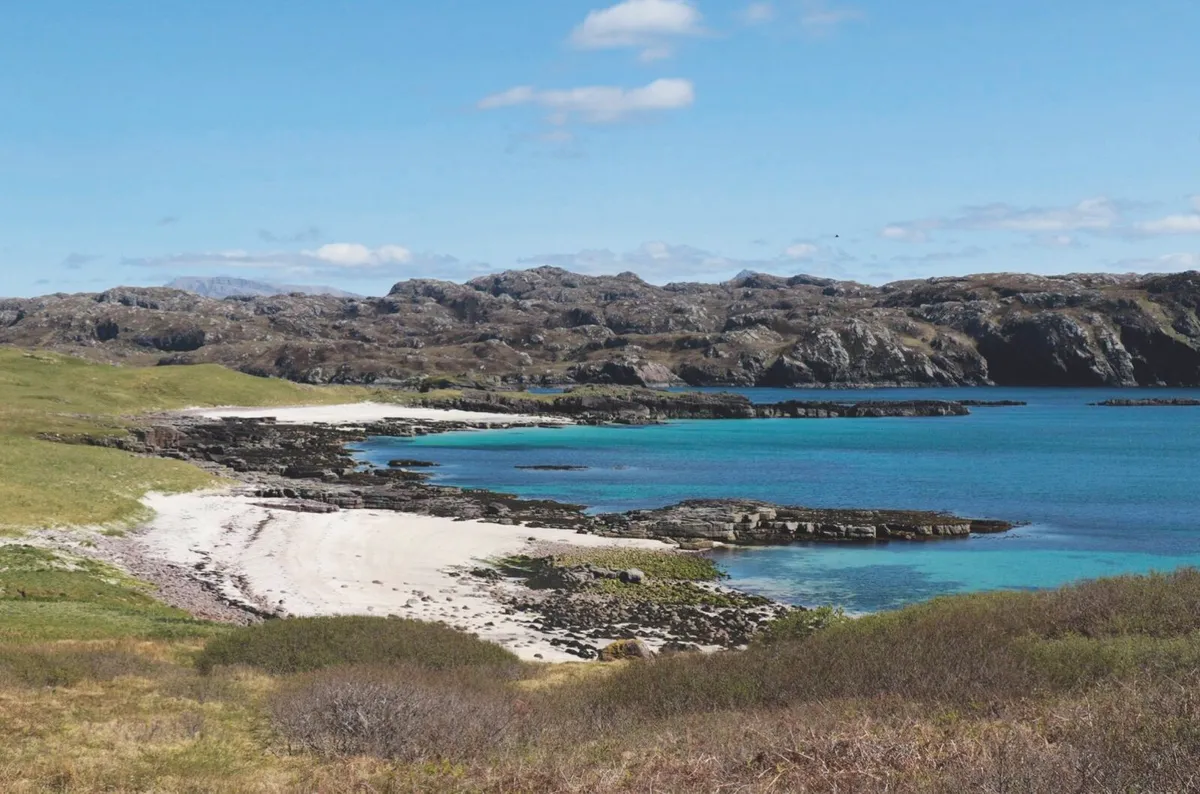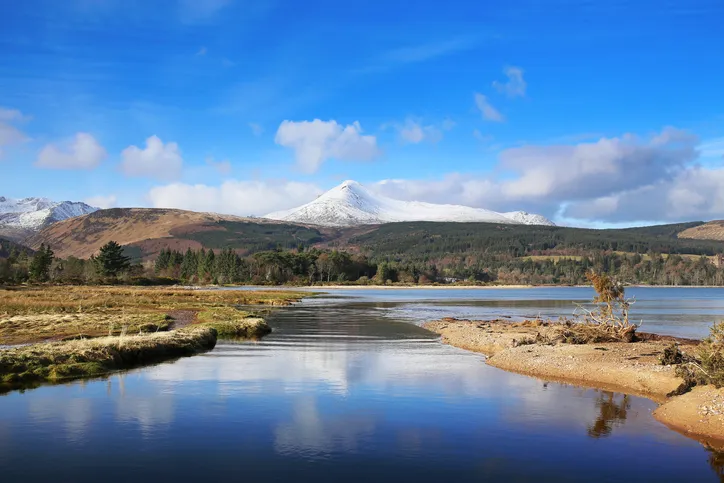With its dramatic mountains, impressive scenery and stunning coastline, Scotland is an outdoor lovers paradise. Whether you want to explore Scotland's Great Trails or historic sites, both the mainland and Scottish islands offer a unique holiday experience.
Scotland's wilderness is also home to an incredible array of wildlife, including golden eagle, red deer, mountain hare and red squirrel and a wildlife encounter can be a thrilling experience.
If you fancy venturing further afield then tale a look at our expert travel guide to a selection of Scotland's most beautiful islands including Skye, Mull, Harris Arran and Lewis.
How many Scottish islands are there?
Getting lost in the Glens not enough for you? If you’ve tramped the length and breath of Scotland and are craving something new, fear not: there are 790 offshore islands to explore off the coast, and each has its own distinct character and unique attractions, from secluded coves and rambling castles to whale spotting and whisky tasting.
Iona

A small island located just 2km off the Ross of Mull, Iona is home to a population of just 125 hardy residents. Only those who live on the island may drive on Iona, so you’ll need to take a bus from Fionnphort and from there take a short passenger-ferry ride to the island. Both the Argyll and St. Columba Hotels are well-placed, with the sound of Iona visible from both.
History buffs will want to visit St. Oran’s Cemetary for the graves of Scottish Kings such as Macbeth, but Iona’s sparse population means that the wildlife is the real attraction here. Seals and otters frolic on the shoreline and Peregrine falcons are a common sight. The best time to visit is in July and August, for a chance to spot migrating whales. Minke whales are a common sight in late summer, and orcas, pilot whales and the occasional humpback have all been spotted nearby. The uninhabited island of Staffa and the prehistoric Fingal’s Cave are a short boat-ride away.
Find Scottish Island walks:

Skye

The largest and most northerly island of the Inner Hebrides, Skye is larger than many of its brothers at 639 square miles, and has a bustling island life to match. Skye is tethered to the mainland by Skye Bridge on the A87, but ferries run from Mallaig for those who want to cross by water. There’s plenty of choice for gourmets, too - the Three Chimneys in Colbost and Kinloch Lodge in Sleat both offer Michelin-star treats.
Frequent boat trips offer sea angling experiences and wildlife tours for spotting sea eagles and dolphins, while golden eagles are sometimes visible on the mainland. The more adventurous visitor can try their hand at climbing the Cuillin ridge, a climb stretching 12km from end to end with sumptuous views, visit the rocky pinnacles of Northern peninsula Trotternish, or aim slightly lower with guided gorge walking – the perfect way to experience all Skye’s nooks and crannies.
Mull

The second largest of the Inner Hebrides, Mull encompasses a variety of peninsulas because of its craggy coastline. Easily accessible from the mainland, there are three ports to get to Mull by ferry: Oban, Lochaline and Kilchoan.
Ben More and its neighbour Stob Binnen are instantly recognisable towering points that will test all but the most experienced walkers. Various cycling routes will take you the length and breath of Mull, and there’s plenty of history to take in as you go - the island is home to six ancient castles.

If all this has tired you out, watch someone else do the work at July’s Tobermory Highland Games. Caber-tossing, hammer-throwing and the classic tug-of-war are all on show at this traditional event – it’s exhausting just thinking about it. Get some rest in one of the bed & breakfasts dotted around the island or a hotel in Tobermory itself, and treat yourself to some whisky & marmalade ice cream while you’re there.
Fair Isle

Halfway between Orkney and Shetland nestles Fair Isle, owned by the National Trust for Scotland. The 200m high cliffs on the west coast of the island are a formidable sight. Smaller even than Iona with a population of just 70 locals, visitors will either have to travel by the tiny Islander plane or get to Shetland and take the quaintly-named Good Shepard IV boat from the Grutness to Fair Isle.
A birdwatching paradise, the cliffs of Fair Isle are home to fulmars, kittiwakes, razorbills, guillemots, black guillemots and puffins. Stay at the Fair Isle Bird Observatory and one of the resident Rangers will help you make the most of your visit. Birdwatchers can also visit the George Waterson Memorial Centre, dedicated to the observatory’s founder. For fans of fine craftmanship, traditional spinning, knitting (the island is the home of the famous Fair Isle jumper, after all) and other arts and crafts are all practiced by locals.
Lewis and Harris

Despite the name, Lewis and Harris is actually Scotland’s largest single island; the northern part of the island is named Lewis while Harris forms the south. Last year Lewis and Harris were voted Europe’s best island destination by Tripadvisor, and it’s not hard to see why: the island offers a unique history and gloriously empty beaches which look more Caribbean than Scotch. The Outer Hebrides are linked to the mainland by ferries sailing the routes from Ullapool to Stornoway, Uig to Tarbert, Uig to Lochmaddy and Oban to Castlebay and Lochboisdale. An airport on the Isle of Harris allows for access by plane.
Those interested in Celtic history will want to ramble around the Neolithic Callanish standing stones and the Iron Age village on the Isle of Great Bernera, connected to Lewis via bridge. Visit in July for the Hebridean Celtic Festival for traditional and modern music, and head to Lews Castle, an impressive pile overlooking Stornoway harbor. If all this history is proving too much, explore the scenic beaches,try sport fishing or head to the Uig hills, home to magnificent red deer and golden eagles. Grab a hotel in Stornoway on the isle of Lewis, or plump for more extravagant accommodation at the Amhuinnsuidhe Castle in Harris.
Handa

In spring, the teetering cliff tops of Handa Island in Scotland’s remote north-west are a sanctuary for avian wildlife. Guillemots, razorbills, kittiwakes, fulmars and Arctic terns nest alongside the puffins and, by summer, the island reverberates with the sound of 100,000 breeding seabirds, one of north-west Europe’s largest colonies.
In the warmer months, a small passenger ferry (07780967800) runs daily from Tarbet on the mainland across the Sound of Handa to the ivory-white beaches of Port an Eilean and Traigh an Teampaill on the island’s eastern shores.
On a calm day, the gunmetal dorsal fins of minke whales, basking sharks and common dolphins may be seen cleaving the deep-blue waters of the strait, while closer to shore, grey seals – hides mottled like storm clouds – exult among blankets of shining emerald seaweed.
Not far from the landing site, the Scottish Wildlife Trust’s visitor centre – a modest stone building, crammed with animal bones, old ID books and binoculars for hire – is the perfect starting point for a circular walk around the island.
Arran

Quite simply because is known as the ‘miniature Scotland’. Full of rustic charm, one of the highlights of the island has to be the diverse scenery, with dominating mountains, pebbly beaches and rich woodlands. With such a range of landscape, the island is therefore home to an impressive collection of wildlife, including Roe deer, Basking Sharks and seals. Being only 167 square miles in area, the island is ideal for a short weekend break, but will still have plenty to keep you occupied if you find yourself unable to leave after just a couple of days.
Arran is perfect for anyone looking to do some outdoor activities. There are endless walks, along the coast and further inland, as well as the opportunity to go climbing, cycling, pony trekking and bird watching. The island is also a popular destination for golfers, with no less than 8 golf clubs, including the Shiskine club which was voted one of the top 100 in the UK.
The villages on the island are essentially all along the coast, the largest of them being that of Brodick. The village can appear somewhat overshadowed by the spectacular peak of Goatfell, Arran’s largest mountain standing at 874m. The gardens at of the grand Brodick Castle are home to an impressive collection of rhododendrons, which is even recognised internationally. Many of the villages include sites of historical interest, from Neolithic chambered cairns in which human remains and a flint knife were found to evidence of Viking occupation. North of the village of Blackwaterfoot is what is known as the King’s Cave, supposedly Robert the Bruce’s hiding place that bore witness to his enlightening encounter with a spider.
As well as an abundance of outdoor activities, there are also sites for the less adventurous to see. Arran has a thriving art community, with galleries scattered across the island. There is also the Arran Malt distillery in Lochranza, which offers tours and tastings for anyone fancying a Scottish-style tipple.
There is a surprising number of places to stay on the island, the most notable of the hotels being the Kilmichael Country House Hotel, which also happens to be the oldest. As well as the main house, there are smaller cottages you can stay in if you’re looking for something a little more cosy. There are also a number of campsites on the island if you’d rather be closer to nature.Creelers Seafood Restaurant is known for its sourcing fresh, local food, making use of the seafood available from Arran and the Western Isles. For something a little more homely, there is the Rosaburn Café which is good for families, and offers a range of tasty treats including the popular Arran ice cream.
The diversity in landscape is partly due to the Highland Boundary Geological Fault, which runs from Stonehaven to Arran. It was active during the Caledonian Orogeny, a plate tectonic collision that happened over 400 million years ago.

